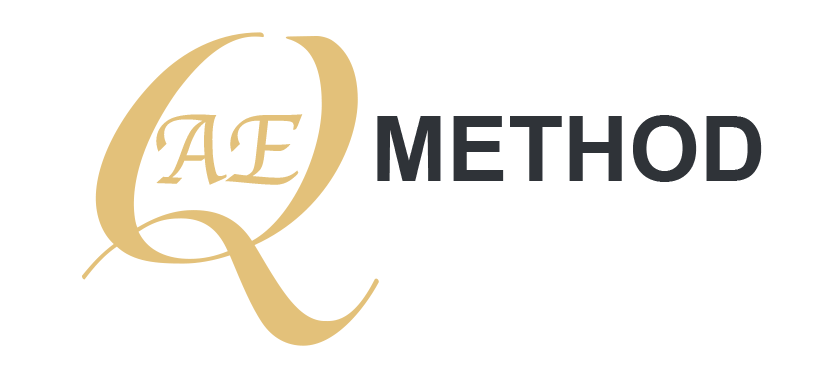HALLUX VALGUS
With the AEQ method, we approached this problem more broadly and deeply, looking in the unconscious. We believe that the deformity of the big toe results from years of changes in movement patterns and attitudes towards the environment. We advise movement changes and reflection on attitudes towards life and the environment.
The definition of hallux valgus: a painful bulge that makes walking more difficult. The big toe moves towards the smaller ones, and its joint thickens and becomes swollen. The initial changes are disturbing, but they eventually become even worse. There are multiple factors responsible for creating this deformation – among them is a hereditary predisposition, as it occurs more frequently in some families.
Source: https://radioprvi.rtvslo.si/2017/04/ultrazvok-61/
The pressure of gravity
The precondition for hallux valgus is an excessive load that lasts longer; it is very likely more often emotional than physical. The person suppresses the body’s instinctive reaction and wants to withdraw from the burden and find other solutions to a relationship that harms psychophysical well-being. This view on the cause of the hallux valgus becomes clearer if we take a closer look at gravity’s pressure. We know what happens if we pass out: we wake up on the floor because of gravity, because we had no choice, we were powerless and helpless. When we are standing up, we defy gravity. But because gravity is pulling us towards the ground, we aren’t as free if we think about it as being under its everlasting pressure. As early as a few months of age, we perceive a desire to move towards a goal, towards something that has attracted his attention. To overcome gravity pressure, we must learn to tense the muscles and create the appropriate internal pressure to overcome gravity so that we don’t land in a supine position. If a person has to stand/withstand the pressure of gravity for too long, this stress can become too much. The question arises as to how long can a person’s legs be kept upright. Sooner or later, they have to surrender, but this surrender prevents the whole from being overloaded. The danger of overload and numbness (as opposed to awareness and feeling) occurs when the legs refuse to give up. The back surrenders shortly after, which prevents the ego from further sabotaging the body.
Knees as fuses
The protective role of the legs and knees can be illustrated with electrical wiring. For it to perform its task in the building properly enough, it needs to be properly planned. Fuses are provided to prevent overloads, and too strong consumers cannot be connected to the circuit. In humans, the function of the fuse is performed by the knees. And just as we can overload the electrical wiring despite the fuses, we can also overload our knees. This happens when we have chronically tense thigh muscles; the knees’ protective function becomes more difficult then. This has already created the basis for foot deformity. The body begins to struggle, looking for changes – in movement, relationships, any way to get away from any pressure. This is where the mind resists because his ego has developed certain patterns since childhood. He solves the state of excessive burden by locking the knees and increasing his thigh muscles’ rigidity. An illusion is created that the body can withstand long-term unsustainable loads. Therefore, I conclude that valgus deformity is not genetically determined but by the environment during adolescence. The child imitates the mother’s or father’s attitude to problem-solving, their physical reaction to overloading, and strategies on how to withdraw from this overload and change relationships so that the overload does not occur. The inadequacy of these reactions, such as overworking and the inability to find the right rest or regulate relationships, causes the child not to develop appropriate patterns that would allow him to take the right approach to problem-solving.
The body responds to the increased load by contracting and solidifying. In an overburdened person, there are two opposing forces which cause pressure: gravity, which, with every other pressure, affects a person from above: the demands of our superiors, family obligations, feelings of guilt, and physical and mental burdens; against the force of the ground, according to the action/reaction principle which allows a person to stand. Both forces collide in the lumbosacral region. This requires reactions of the body with an increase in muscle tone.
Furthermore, the formation of hallux valgus triggers even more difficult movements with increasing external load. Let’s say that you’re watching a construction yard and the three workers on it. The first one is moving a 50kg bag of cement, the second a 25kg bag of glue, and the third one a file with construction plans. Logically, the first one is moving the slowest while the last one walks the fastest. The reason is the higher stiffness of the structure, which must occur if the structure bears a greater load. The same happens when the burden is invisible to the eyes but still puts pressure on the person; if she doesn’t do her best, she’ll give in to the pressure. There is an increased tone of the internal thigh muscles and medial (internal) rotation of one or both legs in this condition. The femur rotates inward and transfers the weight on the leg and foot’s inner side, which increases the stability of the whole and prevents the collapse of the leg’s support. But with that, running and walking become more difficult. The use of energy to move increases and thus overloads the whole. The weight redistributes on the feet – moves away from the heel and towards the metacarpophalangeal joint (MCP), which has to adapt to the increased load by changing its shape and function. Simultaneously, this moves the thumb from its correct position, making it difficult to move the body forward from the current situation and relationships, as the correct distance from the thumb is important for a step forward.

Hallux valgus, therefore, indicates a lack of a subtle sense of strain that would tell us how to proceed so that the condition does not deteriorate. However, when we are aware of this, we need to focus on changing the legs’ muscle tone and lower torso. Higher awareness of bodily reactions allows for the necessary changes in determining how much weight you can currently carry. With increased movement efficiency, the burden will be smaller. Or, even better, if we act just in time, we will prevent hallux valgus from actually occurring.
Understanding the laws of physics and the influence of suppressed emotions on bodily movement makes it possible to change hallux valgus causes. It relieves discomfort and slows down deterioration.
Seek satisfactory help
Depending on your condition, you can choose the appropriate level of qualification of your AEQ teacher.
Teacher of the AEQ method, Level 1 will be successful with milder conditions of chronic contraction in your legs and pelvis; with his help, you will ease the pain in your legs and feet.
Teacher of the AEQ method, Level 2 is suitable for moderate conditions when the legs and pelvis’s stiffness is present for a long time, and the hallux valgus is moderately disturbing. Participates in postoperative rehabilitation and complements physiotherapy treatment. Can explain the influence of repressed emotions on the state of muscle tone in the pelvis and legs.
Teacher of the AEQ method, Level 3 is successful with harder long-term forms of contraction. He complements the physiotherapy treatment post-operation. He helps the patient achieve a deeper understanding of sensory-motor amnesia and understands the role of AEQ exercises, which are a useful way to change your way of life.
Teacher of the AEQ method, Level 4 or 5, can analyze the causes of severe body contraction and rigid membranes by analyzing the patient’s relationships in their childhood and adolescence. The pattern of excessive burden-taking and support for others that leads to hallux valgus in adulthood is usually passed from parent to child. The teacher also masters working the fascia, which facilitates and enables the regulation of the personality and its reactions to the environment, even in severe trauma cases. In this way, it can provide the client with a holistic approach that puts the person with the problem at the center and takes their personal history into account when dealing with it.
Usually, patients with such problems have trouble expressing certain emotions; eliminating that problem is the path to changing their relationships into less burdening. The consequences of poor emotional communication are high density in the abdominal cavity and stiffness of the pelvis and legs, loss of spiral rotation between the pelvis and chest, excessive activity, dependence on a sense of usefulness, compulsive care, feeling overlooked and insignificant. This can lead to problems in the knees and feet early on.
Aleš Ernst, author of the AEQ method and AEQ breathing






